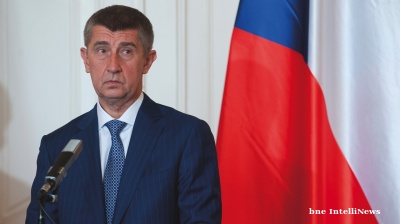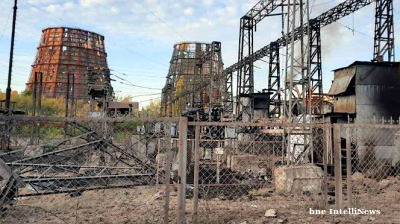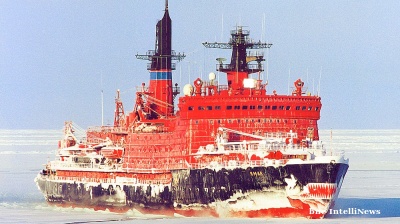The Kremlin upped its game after police used an unusual amount of violence against protestors in Moscow at the weekend and arrested over 1,300 demonstrators.
Videos on social media showed police linking arms and charging crowds mostly brandishing nothing more dangerous than balloons. Protestors were out to call for the inclusion of opposition members in the upcoming Moscow city council elections, almost all of whom have been excluded on technicalities.
The protest on July 27 was unsanctioned by the authorities and came on the back of a 20,000-strong sanctioned rally the week before. That rally was the culmination of a week of protest that grew in size as the week wore on.
Commentators called the July 27 clash the most violent since the large-scale protests on Bolotnaya Square in 2012 that led to hundreds of arrests after protestors fought with police.
“There have been violent clashes with protesters before. The first was on May 6, 2012, closing out the 'Bolotnaya' protest wave of 2011-12, which until then had been entirely peaceful. Some of the anti-corruption protests of 2016-17 were also met with large numbers of arrests,” tweeted Sam Greene, director of the Russia Institute at King's College London. “Force has also been used to break-up smaller scale protests, such as tent camps blocking construction in Khimki Forest or Moscow's Park Druzhby (to name just two). I could go on. Public politics under Putin have never been entirely vegetarian. On all occasions - including this one - police violence was unprovoked. These protests have not seen rioting, destruction of property, rock-throwing or anything else from the protesters' side, other than the occupation of public space and refusal to disperse.”
However, the more than 1,388 people arrested, reported by OVD-Info that has been monitoring police actions during protests, is the largest number of arrests in a protest to date. Russia watchers say that Putin is playing with fire.
The violence of the police response threatens to radicalise the protestors and unite the opposition in a way their own rhetoric has been unable to achieve.
“Violence heightens the sense of injustice, clarifies dividing lines, and sharpens the sense of immediacy - all of which are key ingredients in popular uprisings,” said Greene. “That is not to say that a massive popular uprising is in the works. Things like this happen without bringing down regimes. But it is to say that the things that bring down regimes often look like this.”
Several of the leading opposition leaders were not at the protest as they had been arrested the night before on what opposition leaders claimed were trumped up charges.
In particular, anti-corruption blogger and opposition activist Alexei Navalny had been arrested on charges of organising an unsanctioned rally.
However, on July 28 his spokesman said Navalny had been taken to hospital after suffering from an acute allergic reaction that caused his face to swell and red rashes on his skin among other symptoms. His spokesman said that Navalny was not known to suffer from any allergies and commentators were quick to ask if he had been poisoned.
Has something changed?
Russia watchers have been asking if something has changed in the Kremlin’s attitude to protests. The police were exceptionally violent while the protests were entirely passive.
“The Kremlin is now making it clear that violence is the standard response to protest, rather than just one of a number of possible responses. That is a shift,” says Greene.
Green goes on to speculate that either the Kremlin is sending a message to those would-be demonstrators that have not joined the cause and is telling them to stay away. Or the Kremlin is trying to calm the jitters of the elite, who are Putin’s most important constituents, and to show them he still has the situation in hand.
Russian state media largely ignored the clashes with police in the heart of the capital, but where it did report the story it drew parallels with the “yellow jacket” protests in Paris, in that protestors had attacked police and that most of the protestors had been bussed in from the regions.
The main difference between the Paris protests, apart from their size, is that the protesters in the French capital have been actively destroying property and throwing stones at the police, whereas the Moscow protestors have done no reported damage nor have they attacked the police in any obvious way.
The police right to break up the protests has long been a point of contention as according to the Russia’s constitution Article 31 the people are entitled to peacefully protest.
"Citizens of the Russian Federation shall have the right to assemble peacefully, without weapons, hold rallies, meetings and demonstrations, marches and pickets,” Article 31 reads.
However, the authorities have added the caveat that they must ask for permission to protest within the city due to the disruption to traffic. While the courts are scrupulous in assigning a venue to any protests it is always away from the city centre and out of the spotlight.

A protestor holds up a copy of the Russian constitution to a riot police officer. Article 31 guarantees the right to assembly.
However, something does seem to have changed. The opposition has been notoriously disorganised and prone to internecine fighting, but the issue of the Moscow city council elections and the onslaught of the police appears to have unified the oppositions efforts to some degree.
While the bulk of the commentary has greeted the protesters' determination to face down police charges and stand up for their cause with glee, claiming the Putin regime is ripe for collapse yet again, the reality is that yes the protestors have been galvanised, but their number remains too small to spark a general “coloured revolution” that could force Putin out of office.
Nikolai Alekseev, de facto leader of Moscow’s efforts to hold a gay pride parade faces a similar issue and explained the problem to bne IntelliNews.
“The authorities make it clear that anyone that comes out in support faces clubbing by the police. We are waiting for the point where Russians are so fed up with their leaders they are willing to face being hit by a police baton for the change they want. We are not there yet.”
The sanctioned protest the week before drew 20,000 people but the unsanctioned protest drew 10,000 people that were in effect willing to face police violence for their political convictions.
After six years of austerity and falling incomes this 10,000 remains a very small share of Moscow’s population of some 15-17mn people, but is nevertheless a significant number of people.
The city council elections are yet another sign that the Russian population is maturing and becoming more vocal in what it expects and demands from its government but to force real change on the Russian political system it has a long way to go.
“What we are seeing today is the process of struggle, with the underdog maturing and getting stronger by day. At this particular stage, the Kremlin has “succeeded” in what generations of opposition leaders failed to do - it united the liberal opposition,” tweeted Leonid Ragozin, a well-known Russian journalist. “This ain’t going to be a linear process, but unless Putin starts reforms (as in real clampdown on corruption and criminal behaviour of Security bodies) the intensity of this struggle will keep rising.”
Despite the Kremlin’s best efforts to subdue the population protests have become a regular feature of local politics, however, instead of focusing on the big themes like regime change, that always catch the western headlines, today's protests tend to focus on local issues that affect the local community directly like parks and landfills.
Even the case of the July 27 protests fits the same template as the choice of city council in Moscow will directly affect the everyday lives of millions of Russians and they are simply demanding the ability to choose a candidate that will represent their best interests, rather than a representative of the Kremlin.
Revolution by osmosis
The growing Russian protest movement is being driven by slowly falling living standards thanks to Putin’s austerity, but it is also a function of Russians watching the other protest movements in the rest of the Commonwealth of Independent States (CIS), which the most politically interested Russians are indeed observing.
The most important of these revolutions was the Ukrainian 2014 Revolution of Dignity in 2014 that swept the deeply corrupt former president Viktor Yanukovych out of office. However, rather than an inspiration for Russians, Ukraine’s subsequent economic collapse and military conflict with Russia has proven to be a cautionary tale.
While western Russia watchers are focused on political change that could make people’s lives better, as bne IntelliNews has argued elsewhere equally important for most Russians, if not more so, is not destroying the real material gains that have been made in the last almost three decades. It is this caution that makes a real popular uprising in Russia very unlikely as Russia has made more gains and has the highest standard of living in the Commonwealth of Independent States (CIS).
Having said that the ushering in and promise that Ukraine’s new president Volodymyr Zelenskiy has brought could bring new pressure on the Kremlin from Russians that start to demand the same sort of genuine representation.
Likewise the Velvet revolution in Armenia last year has also introduced alternative models of government that are more accountable to the people. It so far has not ended in collapse and is still inspiring the local population.
And Georgia’s Rose Revolution has set several precedents. Just lately popular protests once again held the government accountable and highlighted to the Russians that governments can be held accountable to a certain degree.
It is not clear how all these protest movements will affect or guide Russia’s political maturation but clearly across the entire region, not just in Russia, populations are politically maturing and governments are being forced to respond.
And the Moscow protests are unlike to end with the mass arrests on July 27 as the opposition politicians have called on their supporters to keep up with street rallies in the run-up to the city council elections in September.
Opinion
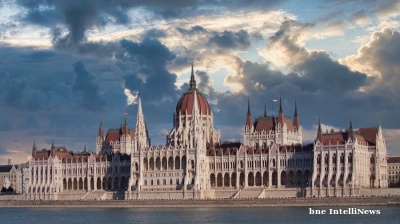
COMMENT: Hungary’s investment slump shows signs of bottoming, but EU tensions still cast a long shadow
Hungary’s economy has fallen behind its Central European peers in recent years, and the root of this underperformance lies in a sharp and protracted collapse in investment. But a possible change of government next year could change things.
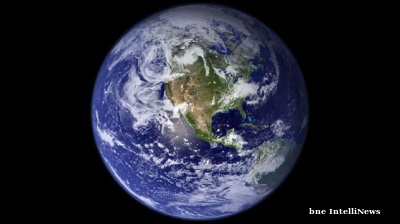
IMF: Global economic outlook shows modest change amid policy shifts and complex forces
Dialing down uncertainty, reducing vulnerabilities, and investing in innovation can help deliver durable economic gains.
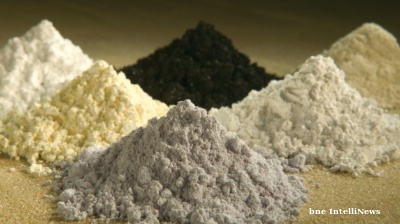
COMMENT: China’s new export controls are narrower than first appears
A closer inspection suggests that the scope of China’s new controls on rare earths is narrower than many had initially feared. But they still give officials plenty of leverage over global supply chains, according to Capital Economics.
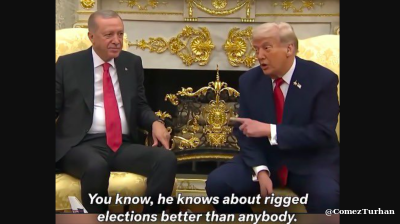
BEYOND THE BOSPORUS: Consumed by the Donald Trump Gaza Show? You’d do well to remember the Erdogan Episode
Nature of Turkey-US relations has become transparent under an American president who doesn’t deign to care what people think.
